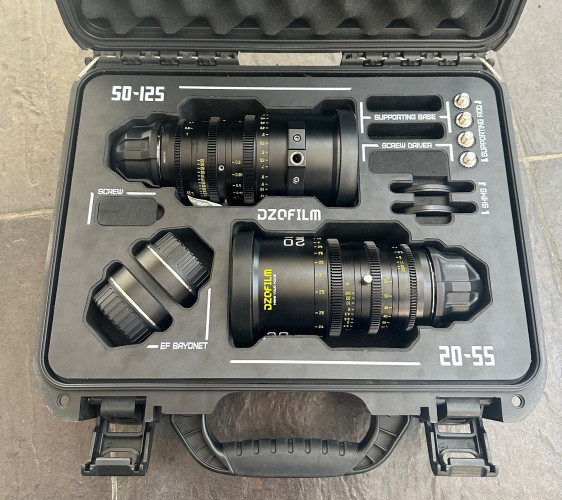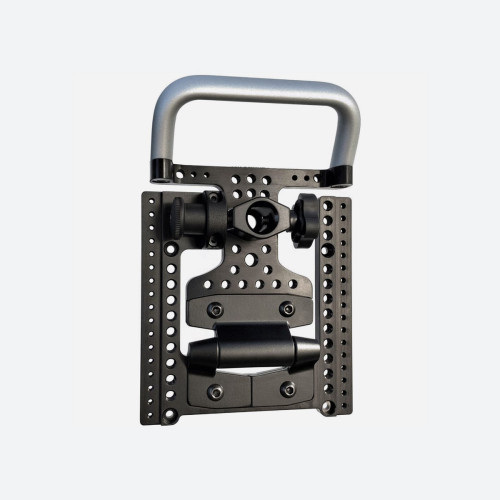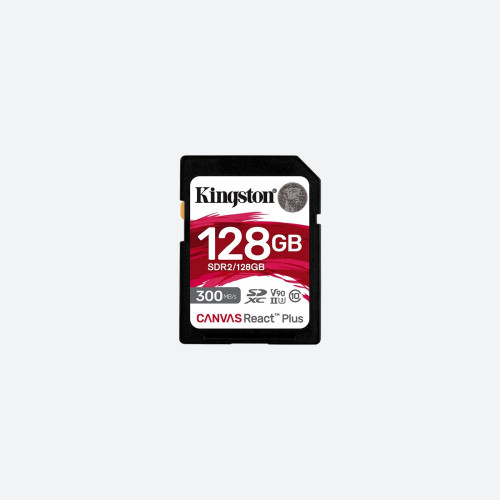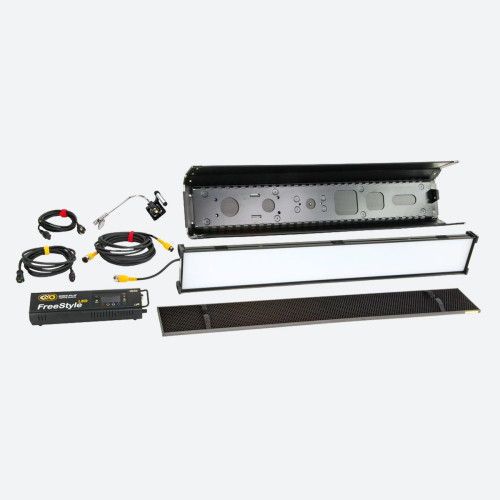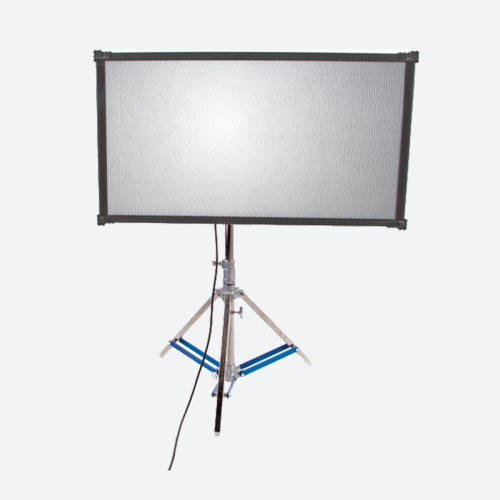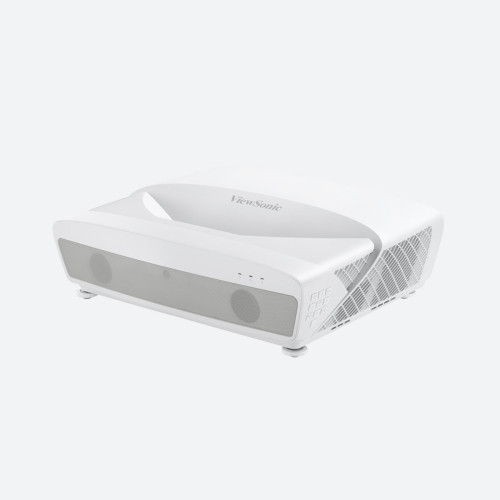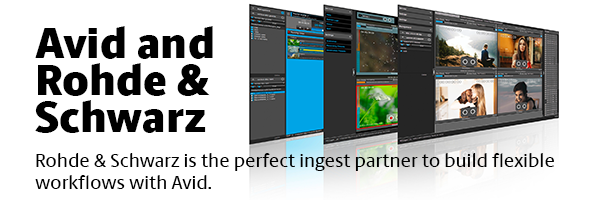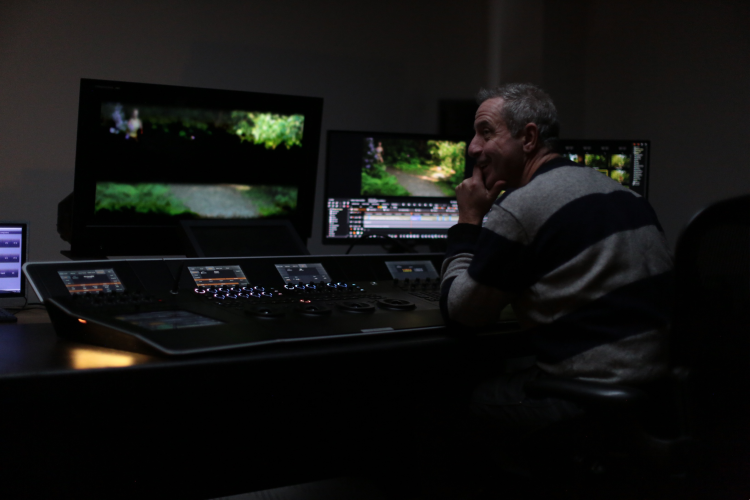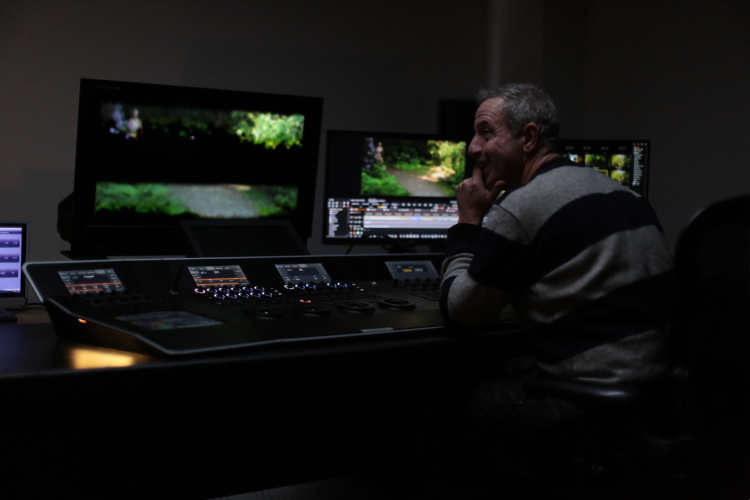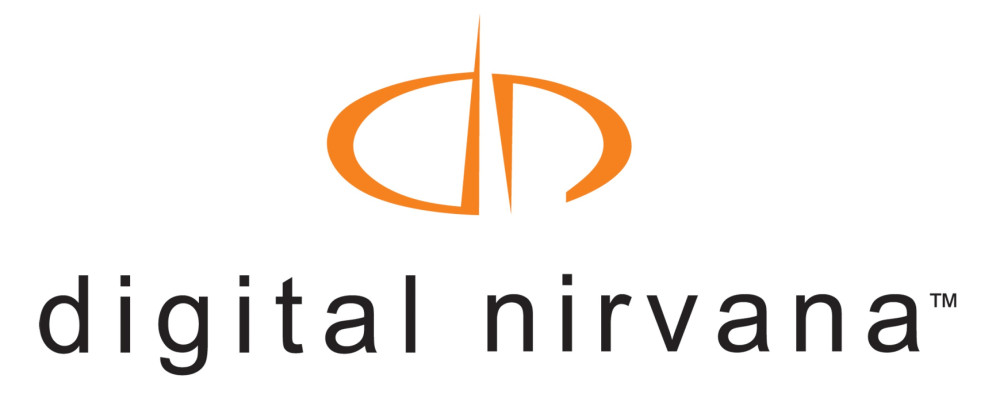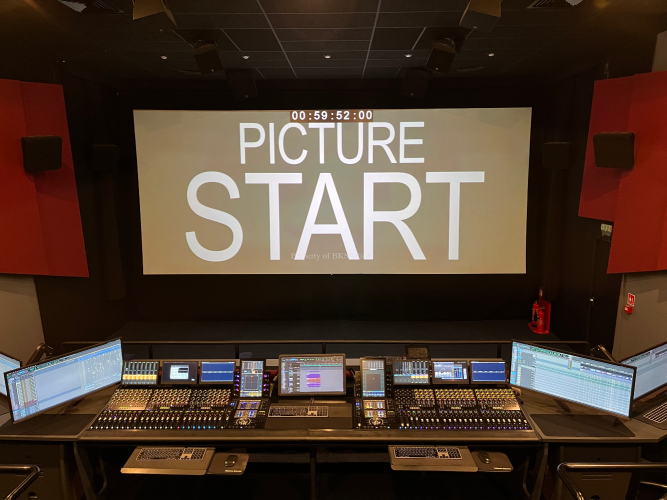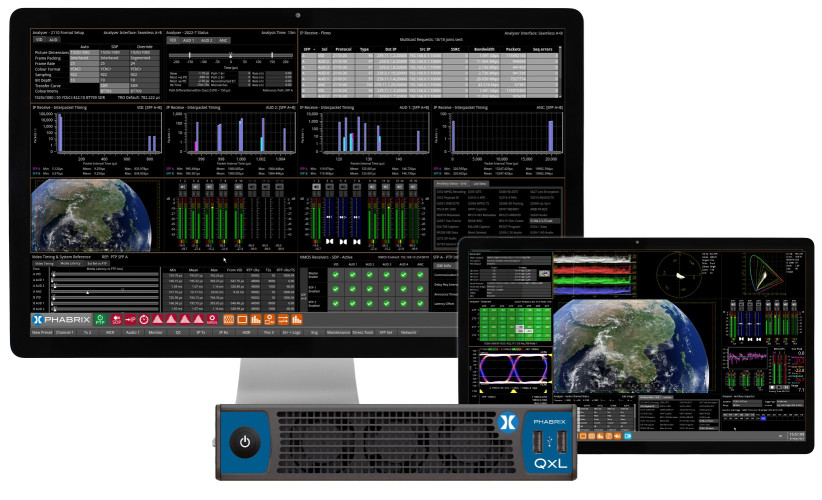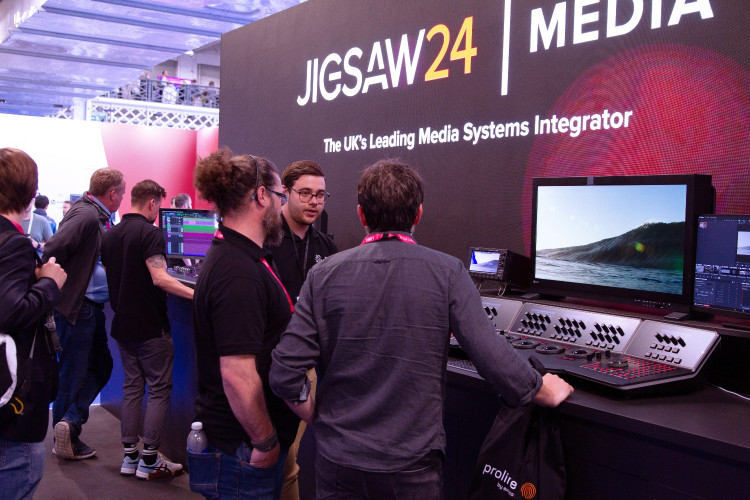Behind the scenes at Big Brother 9
Author: Dennis Lennie
Published 1st December 2008
Working 94 days with no day off is a hard task. It’s even harder for the TV equipment that has to keep going round the clock, every day, to keep all the viewing ‘addicts’ supplied with live footage and highlight editions. This is the situation that the Big Brother 9 team finds itself in. For those inside the house, there is actually a means of escape but for the production team and the equipment, there is no let up!
The UK’s Big Brother 9 is using location post production company DDF, situated on site to provide all the recording and editing facilities. Organising and running the television coverage is a major job requiring specialist equipment to handle a mountain of input, generated by the six streams of footage from 50 cameras that are sited inside the house and that run 24/7, to produce the highlight shows for every one of the 94 days. Having the right workflow is essential and this requires not just using the latest equipment but also making it actually work together, as needed, with other parts of the system supplied by other manufacturers.
The workflow breaks down into three sections: live recording, editing and playout to air. Mark Openshaw, Technical Director at DDF, gives an overview of the set-up. “There’s a huge volume of material that’s shot every day, and we need to be able to access and edit this quickly to produce the highlight shows. So, this is a tapeless operation.”
A major part of the daily operation involves selecting the shots for the highlights shows from all the available material. This is a two-stage operation. The first stage is handled by Roll 2 Record Ltd, which involves the 50-plus cameras which are a mixture of pedestals cameras, locked-off cameras and many hot heads/ ISO cameras. The cut streams are divided into three video streams that follow the story, and three relevant ISO’s streams are also recorded to offer further coverage and cutaways to help the flow of the edited material.
The live recording section is taken care of by two EVS XT[2] disc recorders that ingest the six pre-selected streams of video and 48 channels of audio in total, but can be expanded for future series of Big Brother. For post production this is transferred into an Avid Unity ISIS – a 32TB media store that is at the heart of the post operation. Moving the media from EVS to the Avid ISIS involves EVS Xstreams. EVS hardware that takes clips off the XT[2]s and sends them to the Avid Transfer Manager. This is transferred via 1000 BaseT, in the IMX40 format. There is also an Avid Interplay database server that logs all the media from the Transfer Manager and allows the Avid Media Composer Adrenaline suites to search for particular clips. This may sound slow and cumbersome but it is far from that, as is made clear by Openshaw: “Normally we can start editing the video and audio within five or six seconds after it’s actually happened,” he says. “That is near-live editing!”
A measure of the size of the operation is that there are 17 Avid Media Composer Adrenaline suites. Fourteen are used for editing, two are editor assist stations to provide layoffs, digitising for PSC tapes and other support, and there is one engineering suite to help with system management partly because of the sheer volume of data produced day after day. Using the IMX40 coding from the EVS ingest means about 3.2 TB of media is generated and stored in the ISIS daily. It also means that 3.2 TB of data a day needs to be removed from the server, which involves a considerable management effort. The per-day edited output is a one-hour ‘reality’ show along with a large number of smaller edited VT packages for two other shows. At weekends there are another two one-hour shows.
As this is a continuous 94 day event with perpetual recording, DDF has included a number of backups and fail-safes to ensure operation continues though any equipment outage. This includes a Unity system that backs up the edits as they go, and about 12 kW of UPS power. The BB post system, including backups, is connected with a whole collaboration of networking including fibre-optic, Ethernet, FireWire and SDI.
BB post
The Big Brother recording and post requirements are quite different to any other TV show. Obviously you cannot buy an off-the-self Big Brother post system, nor could DDF easily find all the components it needed in the market place. Openshaw explains, “We developed our own unique logging system so that, as the media is ingested, we can annotate what’s going on in the Big Brother house. So you could search for, say, ‘Darnell arguing with Mohamed’ and it would bring up every case of them arguing in the last three months and show frame-accurate streamed proxy media files of each incident that the search returns. We can build the stories that way and divide them down into an edited package.”
Now over halfway through the show, the system is going well but Openshaw admits, “It’s been a huge learning process. Avid has not used its hardware in this configuration before and the team are supporting us very well. They helped us to develop how the system can be used in a post environment. Interplay was initially launched in the sport and news arena so we had to go slightly ‘off-piste’ about it and develop our own workflow with Avid’s assistance. We have connected our logging system into Interplay, and to make all that operate was a lot of hard work involving some unique coding from us. Besides the software, we also had to develop some hardware and ERA (European Raid Arrays) has been very helpful in that area.”
A major part of the system comprises EVS and Avid equipment. It was essential to the project that the two areas talk to each other and, with over 3 TB per day of data passing between them and the use of near-live editing, reliably operate together. “This was quite problematical to start with,” reports Openshaw. “We had to change some software and operate in a certain way. On paper it should have all worked together but when you have to use it all in anger, we found there was more work to do. All three companies involved: ERA, EVS and Avid supplied us with software and hardware and were very helpful, and we got a lot of cooperation.”
A unique style of broadcasting will always require exceptional resources. DDF, with long experience of the Big Brother technical operation, has achieved this for BB9. The resulting post system is fast, flexible and does the job but it could not have been done without the high level of cooperation and support from the equipment suppliers and effort from DDF.
www.avid.com
www.ddfpost.co.uk



